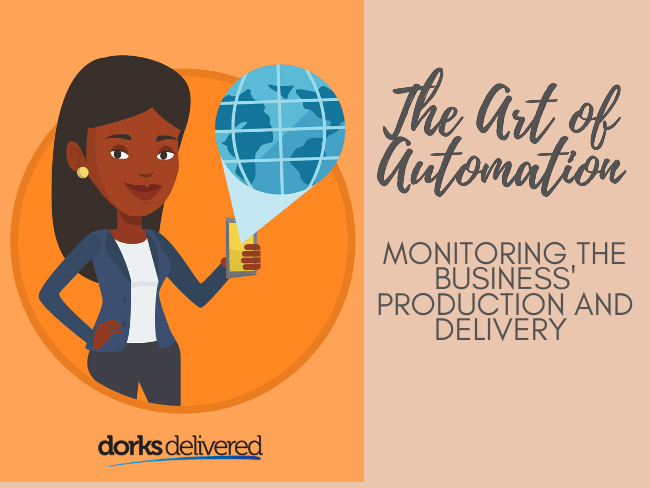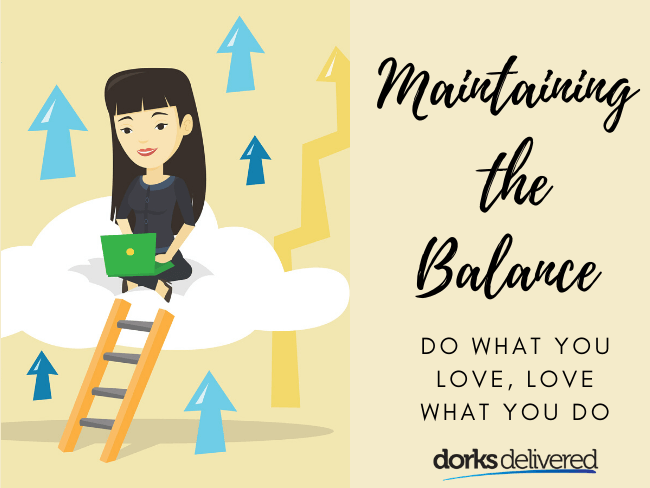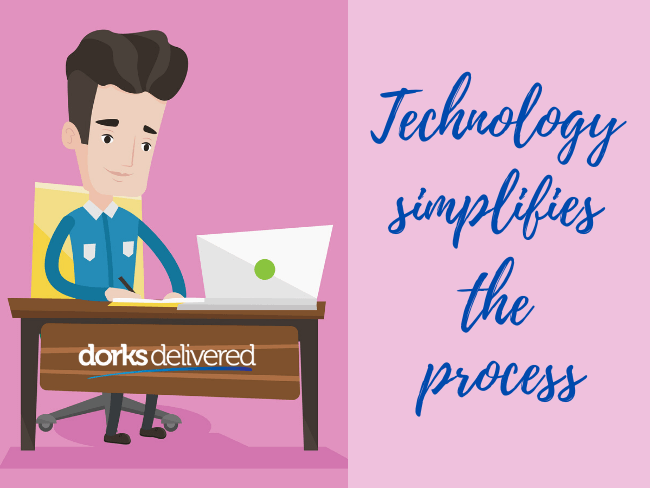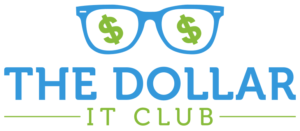Are you handling business for a while or about to start a new one? Have you thought about the advantage of technology in your business? Whether you agree or not, we are now living in a wonderful era of advance technology. The progress we see is rapid and overwhelming. But we must also admit that whether you are an entrepreneur, a student or an employed citizen, it is very much important that you keep your self up with what’s new in this digital age. We must dedicate at least some time to become aware of new technological trends and even test driving them to prepare our business to have a competitive edge from the rest. In this episode, Pip Meecham shares her experience and insights into business process flow and how to improve it with the help of technology.
Josh: Good day everyone out there in podcast land, I’ve got Pip here from ProjectBox.
She is an absolute wiz-kid when it comes to any automation around your business and process flow, and making sure that your systems are working the way your systems are meant to be working. So Pip, tell me, how do you know when a system is broken and how do you know when to fix it, if you’ve always been using a broken system?
Pip: That’s a really good question. The way you know it’s broken is customer complaints, frustrated staff. There could be a host of extra time issues, which then all comes back to frustrated staff as well, at the end of the day. Any kind of bottleneck, generally, you will notice things are starting to go wrong, but it can take some time to kind of pick up on that as well.
Pip: Something could break and then six months later you’ll finally pick up on it. It can take a lot of time without having someone come in and look at how you’re actually doing things to pick up that things are any kind of different if that makes sense.
Josh: Yeah, that makes sense. For me, my big rule that I tell all of my staff is, “Have I asked you once?”
Josh: They say, “Yes.”
Josh: I said, “Have I asked you twice?”
Josh: They go, “Yes.”
Josh: “Okay. Then I don’t have to ask you a third time because you’ve already automated it.”
Josh: If you’ve had a problem come up more than once or you think that this situation is going to come up more than once, then template it out and automate it. You’re saying, complementary to that information, you would also make sure that the user experience, not just repetition more so the user experience isn’t broken.
Pip: Yep and most people don’t think like you. Most people don’t have that trigger to go, “Hey, we’ve done this three times.” Or, “Hey, this has gone wrong.”
Pip: Or anything like that, they just keep going with what they’re doing, and there’s nothing to really trigger that until something big happens, which could be a customer complaint or someone within the team saying something. It’s a really tough one, if you’re not systems tuned, most people don’t pick up on it.
Josh: It comes down to people to continue doing what they think they’re meant to be doing for an extended amount of time. Not knowing that what they’re doing isn’t what they should have been doing.
Pip: It’s rare to find people who have that kind of continuous improvement mentality to go and actively look for things. I actively try and break stuff all the time but that’s my mentality.
Josh: Yep. You’re a hacker. That’s exactly what a hacker does.
Pip: I’m a breaker, not a hacker. I don’t get in, I just break it.
Josh: It can be both. You and I are very similar in that regard. We try our best to work out what is the best way to achieve something the fastest, most efficient way.
Pip: Yeah. A to B.
If you need assistance with your automation, talk to a dork. Fill out the form below to book a free one-hour consultation.
Josh: Yeah, and automation doesn’t necessarily have to be a piece of code with loops and all sorts of other stuff that has an input and an output. It can be an input and output, but it can also be just a procedural document that allows you to know when staff is following something, very similar to how McDonald’s work.
Josh: They go through and they create ice cream, a burger or whatever it is. And when you get it, whether it be in America, Canada, Australia, it’s always the same crappy burger, but it’s the same burger. And it’s being made by a different 14 and nine-month-year-old child or teenager, but it’s the same burger, the same process. That’s just come through repetition and the document that they’ve read, and knowing that this is the way that it works, this is the most efficient way.
 Pip: A lot of people don’t think like that.
Pip: A lot of people don’t think like that.
Josh: No!
Pip: There’s so much decision fatigue in a business where people wing it all the time, and they lose a lot of time because they’re doing that. Whereas if you’ve got a straight-out, set out processes. First, do this, then do this, then do this. Automation kicks in to do some of that for you. It’s so simple and it’s so streamlined. Whereas other people are just weighed down because they’re so overwhelmed on what to do next or how to do it.
Josh: I’m going to talk on behalf of all the bloody Australians out there and say, this is the best time to be looking at your processes. Everyone’s in lockdown. I’m sure everyone’s working 120% of what they were before. That’s why Bunnings is full of people because no one’s actually working.
Pip: I can hear so many hammers and chainsaws around my neighbourhood.
Josh: Me too. I’m like, “Yeah, everyone’s really working hard guys. Are you all labourers at home?”
Josh: Anyway, everyone’s working at home and they’re working on the house, which is great, but you should be working on yourself and on your business. This is the best time. When everyone goes, “I don’t have enough time for that.”
Josh: Bang, this is enough time for that. You’ve got the time to do it now and this is a perfect time. They should be engaging in people like yourself and seeing what you can do to help them out. And as you said, there’s always room for improvement and I’m not going to say what I do is right. But it’s going to be better than not doing it at all.
Pip: The problem is as well, is that people get so caught up in their own business that they can’t see it, outside. What they’re looking at-
Josh: Can’t see the forest for the trees.
Pip: Yeah. They’ve got tunnel vision like there’s nothing else going on except what they, used to do, what they know they need to do. Whereas I would come in and something that I kind of love doing and it’s really wrong, but I love going in and pulling people’s processes apart, and looking at the ripple effect that everything has on each other as well.
IT doesn’t have to be expensive. If you’re starting a business and need reliable IT support and services, fill out the form to learn more about $1 IT services.
Pip: Because everyone always talks about, a lot of people are changing technology at the moment because of everything that’s going on, they’re going, “Right. We’re going to use this. We’re going to implement new tools to do this. We’re going to do this and blah, blah, blah.”
Pip: They look at that as a single element and they’re not thinking about what’s happening before and what’s happening afterwards. So people are putting these new things in place and they think it’s fantastic, but stuff is still falling over because they’re not taking into account what’s going on around it. The ripple effect.
Josh: Yeah, exactly. The butterfly effect, ripple effect. It comes down to a big thing that people don’t do enough. I started doing it 13 years ago, 14 years ago and then didn’t realise how much of an impact it’s had, but business plans. Why are you in business? Why do you exist here? What do you want to achieve? What are you going to achieve in one month, one year, five years, we’ve all heard it.
Pip: Hate it.
Josh: I started writing to them. I’m like, “Uh, this is stupid.”
Josh: Then I wrote it and then thought, okay, let’s see how this goes. Then I’ve looked back on some of them and I thought, wow, I’ve got so much more maturity, growth, direction. And some of the things that I thought were really important then, are no longer important and some of the things that are important now, I would never have thought I was even going to be doing.
Josh: But being able to look back on what you’ve been able to achieve, lets you see the growth that you’ve done. That’s the same when you create these processes that sit there and can run autonomously or be running by someone else that’s not you. You’re able to have these processes running and then look at them from a distance to go “Hmm, how else can I tweak that?”
Josh: While you’re not sitting there being the driver. If you’re always driving around, you’re never going to be able to really see the sites out the window.
Pip: It’s being able to remove that connection.
Josh: That’s right.
Pip: Cut the heartstrings.
Josh: Absolutely, as long as that’s what you want to do in business. I will say, straight away when I started my first business, I was the main driving cog and I was the person that did all the things in business, and I earned all the money and I earned all the debt. it was interesting and good and bad. But overall, I didn’t want to be the cog. I wanted to own the cogs. I wanted to have the systems, have the process to be able to step back.
Josh: That’s not for everyone, if you read any book on business or any masterclass, that’s what everyone apparently wants, but there are businesses that we work with. One, in particular, he’s a cartoonist and he’s big driving motivator is he just loves drawing. He said, “It’s a lifestyle business.” Now, to be fair, his wife’s in a lovely position where she’s earning enough money that he could have that decision. So, lucky boy.
Do you need help with backup and recovery? Fill out the form to get in touch with a Dork.
Pip: Yeah, but I get it. People always ask me what I want to do with ProjectBox.
I don’t ever want to stop actively getting into people’s businesses and looking at their processes. I legitimately love that stuff, as geeky as it sounds, and people look at me like I am just stupid and crazy, and I’m off with the fairies, but I love it. I get this sense of, it’s like a thrill with a huge endorphin rush. When you go in and you help people piece this stuff together. I don’t want to lose that, but I also want to be able to grow the company.
Josh: Yeah. It’s always about the balance. You need to make sure that you’ve got that interest. As I said, why did you get into the business? Work at why you’re in business, and this is, you brought this up earlier, probably not everyone’s mentality, but when I first started Dorks Delivered in 2007, I thought, okay, I want to do this right. I’ve now got the trust and I’ve got a company, I’ve got all this stuff and all these structures.
 Josh: Let’s make sure that I’m getting rid of any of the tasks that I don’t like doing. And I thought, what do I like doing? Hate doing bookkeeping, hate doing invoicing, hate doing the car logbook. I thought this sucks, so I created a process. I created an app back then or was it a web-based app. It worked on the Symbian mobile system for anyone that’s out there that cares.
Josh: Let’s make sure that I’m getting rid of any of the tasks that I don’t like doing. And I thought, what do I like doing? Hate doing bookkeeping, hate doing invoicing, hate doing the car logbook. I thought this sucks, so I created a process. I created an app back then or was it a web-based app. It worked on the Symbian mobile system for anyone that’s out there that cares.
Josh: It allowed for you to jump in there and see, as a technician, I had contractors working with me, they’d be able to enter where they’re going and would work out their home address to where they’re going, the number of kilometres, how much to charge and how much to put on that invoice.
Josh: They’d then get there and they’d type any prices and it’d automatically work everything out and then click submit or come up with a PayPal and they could get credit card details straight through their phone, right then and there, and this is 2007.
Josh: So I built all that out and it was because I hated all the invoicing stuff. You could take photos and attach invoices and attach expense records, all sorts of things like that. You could do all that. I built this because I hated doing it. Now, not everyone’s capable of building it and totally understand that, but that’s why you bring in professionals that can help you out.
Josh: The actual process of building it took me several hundred hours. Now, if I looked back and thought, would it have been more beneficial for me to have just learned how to do the invoicing and just done that and in a repetitious way? Possibly, but it wouldn’t have been as fun, would it?
Josh: And I’ve learned so many more skills and that’s kind of what you’re getting at. You get to learn. You’re always growing, expanding and being in business is about being able to delegate. Whether that be in a digital sense through scripting and automation, or through staffing and process documentation, it’s being able to delegate to grow your business.
IT is indispensable but it shouldn’t cost hundreds of dollars. Fill out the form to learn more about our budget-friendly on-demand IT solutions.
Josh: If you had to pick the top three things that a business owner should be considering with the way their business is set up and what they should change, what would you say they should be? And how can they achieve those for, let’s say we’re in lockdown ’til September, yeah?
Pip: Yeah.
Josh: I think that that’s probably likely. So what would you say, how can they do those between now and September?
Pip: Yep. The biggest one is how information is flowing from one system to another. So no double data entry, too many people, literally they’ll get it in one format and then by copying and pasting it into other programs. Stupidly time-consuming and massive room for human error as well, because someone has to do that. That’s a really big one.
Josh: Yep. If you’re using a pen, remove it. Stop using a pen. Stop having customers fill out forms with a pen.
Pip: Definitely another one, try and go digital where possible.
Josh: Absolutely.
Pip: The number of people who are still doing it, there is a place for pen and paper. As much as I’m very much a digital person, when I am holding process mapping sessions or the brainstorming creative stuff, I have a roll of butcher’s paper. It ends up running down my hallway and I’m literally dragging my computer down the hallway on my hands and knees filling out this paper because that’s how I work there. It’s really quick for me to draw arrows and then it gets turned into obviously digital [inaudible 00:00:12:31], the paper goes away. Sounds like a waste but I know that that is how I work best.
Josh: I love that because I’m on computers for hours and hours, not because I have to, because I want to. I could spend 18 hours a day on a computer just working because I love doing it. You have people like Gary Vee said, “Work harder, work smarter.”
Josh: Well now what? I’m like, “Well, just do what you love doing.” And I genuinely love doing it, but I also love the feeling of paper in my hands. And I’ve got a big whiteboard inside the house, like a four and a half metre by three by the two-metre whiteboard. I’ll write up with my partner, Sarah, any of the new processes that we’re going to be going through, any of the if-then statements we’re going to be popping into any of the automation and make sure that we’ve written that out because it’s easy to modify it and it changes your perspective. And get this everyone, it removes all those, how many times have you had a push notification from Facebook while you were dealing with butcher’s paper? You don’t have any of that.
Pip: It’s no distractions.
Josh: No distractions. How good is that? It’s great.
Pip: Yeah. But it brings out creativity as well. It’s like going back to that cave person thing where we’re drawing on walls. Obviously, there are some people that entirely a hundred percent digital is going to work for them. Most people, that’s not the case. I know people who will still take them to-do list and then send it to a VA to transcribe it into a project management tool because that’s how they work.
Do you want to learn more about technology for business? Fill out the form below to get a callback.
Pip: They just can’t get on and do it, so they’ve delegated it to somebody. Yeah, get digital where possible.
The next big one and this sounds really stupid, but clean out your computer filing systems. I’m generalising here, but a lot of people it’s like going to the supermarket where all the shelves have been knocked over and everything’s been stirred together and trying to find fish in the fruit and veggie aisle. It is, looking for medicine and it’s down in the freezer.
Josh: And after a while, the whole process stinks.
 Pip: Yeah. So it’s taking time to sort out where everything is stored so that if a client rings, same with like your CRMs and project management tools, give everything like cleaning over. It’s a really good time to be doing that now so that you should be able to find anything within about 10 seconds. No longer.
Pip: Yeah. So it’s taking time to sort out where everything is stored so that if a client rings, same with like your CRMs and project management tools, give everything like cleaning over. It’s a really good time to be doing that now so that you should be able to find anything within about 10 seconds. No longer.
Josh: Yep. I did a podcast a few months ago on defragging your filing cabinet and then your computer, or something like that. That’s probably a cooler name than what I called it. But people do, we go into people’s systems, I’m not going to say who it was, but I went into someone’s system, they had two monitors and they had about 500 icons now.
Pip: On their desktop?
Josh: On the desktop. Anyone that has two monitors, if you’ve ever tried to put 500 icons on the desktops, you’ll notice they don’t fit on two desktops. So he had icons that he couldn’t even see, they were on his two desktops. And you can’t scroll up and down on a desktop, so they were just in the abyss.
Pip: And for a lot of people, those computers die and all of that is gone.
Josh: Gone, and they use these obscure systems where they go, “Okay, let’s have this cloud of files that store on the right-hand side of the desktop.”
Josh: Then you do a Windows update and then everything rearranges to automatic, and then you go, “Oh no! This is going to take me days to fix up my icons.”
Josh: Just fix it up now, you’ve got this great opportunity. That’s great advice. That’s a really good one actually.
Pip: Yeah, nothing should be on the desktop.
Josh: No. Well, you haven’t seen my computers yet but I’ve got eight icons and it’s the things that I use commonly, and use all the time.
Pip: And there are shortcuts. So the original files have safety elsewhere.
Josh: Somewhere else.
Pip: Stored properly, with just shortcuts. And shortcuts are a great thing too, because most people will just copy the file, so there are two copies. So I update one and then they’ll go to move it and not realise what’s going on and go, “What file do I use now?”
Pip: And end up with three, four, five, six or 10 different copies. So creating shortcuts, it’s something that not a lot of people take advantage of.
Josh: Shortcuts are great and I’m not going to get into heaps of detail on shortcuts, symbolic links and other bits and pieces of IT, but shortcuts are great. People should be using shortcuts. And in a filing cabinet, traditionally, you have things sectioned and it could be A to Z, but most of the time its warranty information, ATO letters, bank statements, all that.
Pip: Categories, yeah.
If you need assistance with your automation, talk to a dork. Fill out the form below to book a free one-hour consultation.
Josh: Your computer systems, it doesn’t have to be any more complicated than that.
The way that I like to do it is, what would you share with your mum? What would you share with your partner? What would you share with your business partner? What would you share with your staff? What would you share with your nana and what would you share with the world? And then make sure your hierarchy has things in those categories and then from there then have projects inside those.
Josh: For me, I’ve got family, personal, business, the three main ones. Then inside personal, it then stems off into different year categories for photos and things that used to go into your personal, it goes to photos. And then it has different years that these photos were taken inside each year, it then has different events for each of those years. And so if someone said, “Ah, do you have any photos from my 21st from way back when?”
Josh: You’d be able to go, “Yeah, no worries.”
Josh: Click, click, bang, done. I had someone actually, and I’ve been a bit of a stickler for the organisation for quite a while. I had someone say, “Oh, remember we did that school assignment on moths?”
Josh: And I said, “Yeah.”
Josh: Said, “Oh man, if only I could see what my assignment looked like then.”
Josh: Anyone who knows me knows I’m a bit of a tricky dude. I happened to have acquired his assignment through the school systems back then, so I gave him a copy of his assignment.
Pip: Wow.
Josh: He’s like, “What the hell? How’d you do that?”
Josh: And I’m like, “Yeah, no, it’s pretty weird, eh?”
Josh: Having a hierarchy that works for you and the reason I say that those different categories to start off with, like the personal, and then the things you’d share with your nana or your mum and things like that is because if you are using different tools like Dropbox, you can then say, share this folder out to whoever, and it doesn’t matter. And you know it’s not going to have personal stuff.
Pip: It gives people a great place to start because half the problem with this stuff is just getting started instead of looking at it going, “Oh my God, I’ve got like 10,000 files I need to sort out because they’re all sitting in my downloads folder.”
Josh: Yep. The first five minutes is the hardest.
Pip: Setting up that initial structure and then just, yep.
Josh: Setting up the initial structure, and this is something I would’ve done on butcher’s paper or would have done on the whiteboard. You just write it down and go, “Okay, that makes sense. Okay, that’s sensible.”
Josh: And then you look at and go, “Okay, who’s going to have access to what? If I give access to this folder, everyone has access to that.”
Josh: Obviously I’m talking a bit into the security-stuff as well as just the organisation, but I just find if you start with security first and then organise around that, it’ll make your life very easy and harder for people to break into your stuff.
Pip: Definitely.
Josh: As things become harder and harder.
IT doesn’t have to be expensive. If you’re starting a business and need reliable IT support and services, fill out the form to learn more about $1 IT services.
Pip: I guess my final one would be reviewing the tools and the software that you’re using.
Use the time to go in and look at all the individual platforms and work out if there’s any overlap because quite often we sign up to things or people recommend things and we don’t really do a lot of research around it. So more often than not, the tools are capable of doing more than what you think and you can actually condense those down, or you can start to get them to talk which brings us back to the first point.
Josh: Yep. I would agree completely that and tools evolve even after you build them, they evolve over time and you look at some of the things and you go, “Man, that never did that before.”
 Pip: It’s really knowing and understanding exactly what that tool is capable of doing.
Pip: It’s really knowing and understanding exactly what that tool is capable of doing.
Josh: It’s going through it, having a look.
Pip: Hey, you can’t break stuff.
Josh: Exactly. Just have a muck around then. That’s great advice, especially as I said, while everyone’s at home, hopefully with a beer in your hand, hypothetically we are having a beer, possibly, unless you listen to this at 7:30 in the morning, then we’re definitely not. But it’s a great time to be doing that and be jumping in and making sure that your systems are ready to go gangbusters.
Pip: Exactly. So that as soon as things take back off again, you’re ready to go. Holes have been plugged, you know what’s what, you know what’s happening by when, by who and how.
Josh: Yep. And the cutovers, if there are programmes that you don’t have to get rid of, you can’t get rid of it because one thing does something really well and then another thing. We use ActiveCampaign internally. We’re using another IT programme called ConnectWise, up until recently and ConnectWise did email marketing very poorly, but it did ticketing and invoicing really well, which ActiveCampaign didn’t.
Pip: That’s like I said to you before, I use ClickUp for my sales dashboards because I couldn’t get the data out of ActiveCampaign, But it’s knowing that I could do that and understanding that.
Josh: Yep. And that’s where having a document on what the cutovers are, at least let you know where data is meant to be stored. The flow of data is very important. Knowing where your master, your primary, your truth data I guess, where you’d say this is where everything is pure. And then if people have entered dodgy records or transcribe things incorrectly somewhere else, then you can start to work out where the other stuff is.
Pip: Go back.
Josh: The last thing you want is if you’ve got five systems that you’re running, as I’ve heard, or in a lot of American talks, “the silos of chaos.”
Josh: You have all these silos and you just can’t control them and can’t manage them and just everything gets out of sync, and then it gets out of whack. This is a great time to be bringing in people, especially like people from ProjectBox, that’s able to look at your systems, integrate your systems and make sure that your data is staying the same between all of them, and you don’t have any overlaps with your processes, and you’re running an efficient shop because ultimately you don’t know what you don’t know until you know it.
Do you need help with backup and recovery? Fill out the form to get in touch with a Dork.
Pip: Yeah, exactly. The number of people that I’ve met or that I’ve done work with, who you ask the question, “How is this bit happening?”
Pip: And they look at you and they’re like “What do you mean? I know how that’s happening.”
Pip: I’m like, “Cool. Lay it out for me. Tell me what’s supposed to be happening at every step.”
Pip: And they either can’t or we start talking, they’re like, “Oh, well that should be happening.” Or “I wish it could do this.” Or, “Someone’s supposed to do this.”
Pip: What they think is happening in their head is completely different from what is actually happening. Now a really good time to be looking at that stuff as well. And for the businesses who are super busy right now, this is the time where they will probably start to notice where those holes are.
Josh: Yep, absolutely. It’s interesting times, businesses are either crazy or quiet or crazily quiet. I think there’s a lot of good take-homes there. People need to be jumping in, making sure their systems are good. Their filing processes are good, and that you are engaging in people services. So if people did want to jump in and get a hand throughout South East Brisbane, or what is your reach with ProjectBox?
Pip: So South East Queensland, Northern New South Wales, but because of what I do, I can do it remotely. So realistically, anywhere around Australia and New Zealand as well, I’ve got quite a few clients over there too.
Josh: We’re going to chuck a link down there to ProjectBox so you can check it out. Is there anything else you’d like to cover off, other questions that we haven’t gone through?
Pip: No, I’m pretty sure we got it.
Josh: Yeah, cool. I’ve loved having you on the show and if anyone else has any feedback or bits and pieces, I’d like to say jump across to iTunes, leave us some love, give us some comments or a review and everyone out there stay healthy, stay well and start automating. Catch you later.
[module-379]









